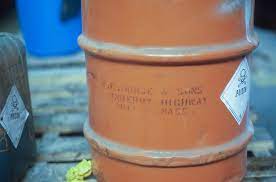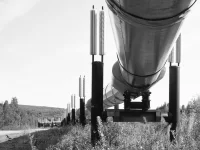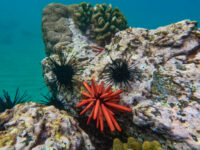The industrial synthesis of many widely used chemicals ranging from fertilizers to pharmaceuticals is known to produce toxic byproducts. Some of these products, dubbed “forever chemicals,” are exceptionally resistant to degradation and tend to accumulate in the environment when improperly disposed of. One family of forever chemicals known to be widespread in the environment is halogenated aromatic hydrocarbons (HAHs). These compounds consist of reactive halogen atoms (typically fluorine, chlorine, or bromine) attached to highly stable carbon structures called aromatic rings. When humans and animals are exposed to HAHs, they can induce DNA damage, organ failure, and cancer. Due to the severity of these effects, large investments have been made in researching safe ways to remove these chemicals from nature. Yet, due to the near ubiquity of HAHs in the environment, few effective solutions have been proposed. However, microbiologists have suggested one daring strategy to defeat HAHs: harnessing the power of a far more ubiquitous opponent, bacteria.
“However, microbiologists have suggested one daring strategy to defeat HAHs: harnessing the power of a far more ubiquitous opponent – bacteria.”
While multicellular species struggle to quickly adapt to environmental toxins, bacteria often experience the opposite. Due to their fast generational turnover and propensity to “share” DNA, bacterial communities can rapidly evolve immunity to toxins. Additionally, it is not uncommon for bacteria to further develop the ability to metabolize environmental toxins as food. If few other species can safely digest a common chemical, random mutations that exploit this underutilized resource become a fitness advantage. These advantages eventually become preserved in populations through natural selection, as seen in cases of wild bacterial isolates capable of metabolizing Styrofoam and radioactive debris.
Fortunately, past research has identified multiple wild bacterial populations with mutations enabling the digestion of HAHs. Some of the most notable examples occur in Rhodopseudomonas palustris – an aquatic anaerobic bacteria found in oceans, lakes, and wetlands. Recently, researchers at the University of Minnesota discovered that select strains of R. palustris are effective at degrading HAHs derived from the widely used aromatic reagent benzoic acid. If bioengineers can induce this ability in R. palustris and similar species on a large scale, it would provide an efficient and minimally invasive method of environmental decontamination. However, the Minnesota team noted a major roadblock to these efforts. While multiple HAH-digesting strains have been previously isolated, the molecular mechanisms behind this ability were poorly understood. This led them to subject a strain of R. palustris with no special digestive abilities through a series of controlled genetic manipulations to model for the first time the precise sequence of mutations required for HAH digestion.
“Overall, they found digestion of this HAH involved two specific mutations.”
This pathway was revealed after several months of subjecting mutant cell lines to the halogenated benzoic acid derivative 3-chlorobenzoate. Overall, they found digestion of this HAH involved two specific mutations. First, the regulatory gene that inhibits the production of the enzyme responsible for benzoic acid degradation needed to be deleted. This resulted in cellular buildup of digestive enzymes with an affinity for benzoic acid. By random chance, these enzymes sometimes made mistakes and broke down molecules chemically similar to benzoic acid, such as its halogenated derivatives. In media rich with HAHs, such mistakes are highly beneficial. Thus, a second mutation on the enzyme’s gene that increased “promiscuous activity,” or the propensity to make these errors, was selected for within the population. Over time, this natural selection resulted in the entire population demonstrating efficient HAH digestion.
With the precise order of these mutations and their location on the bacterial chromosome identified, these findings demonstrate tremendous potential for future bioremediation efforts. As a common nonpathogenic bacterium, modified R.palustris could be introduced into contaminated waterways and soils as a minimally invasive detoxification agent. However, important concerns regarding feasibility need to be addressed before successful deployment can occur. A recent review article outlines that it is uncertain whether bioengineered colonies of R.palustris can reach effective population sizes when introduced as free-floating cells in a body of water. Further research must investigate methods of ensuring the long-term proliferation of the species post-introduction and whether this may introduce any unintended ecological consequences. Successfully addressing these concerns is the first step towards a future where environmental damage can be repaired naturally by the bacteria all around us.
- Applied and Environmental Microbiology (2024). DOI: 10.1128/aem.02104-23
- Frontiers in Bioengineering and Biotechnology (2022). DOI: 10.3389/fbioe.2022.897003
- Environmental Science and Pollution Research (2020). DOI: 10.1007/s11356-020-08404-0
- Applied Microbiology International (2019). DOI: 10.1111/1751-7915.13488
- IOP Conference Series: Earth and Environmental Science (2019). DOI: 10.1088/1755-1315/308/1/012001
- Evolution, Medicine, and Public Health (2014). DOI: 10.1093/emph/eou010
- Chemosphere (2011). DOI: 10.1016/j.chemosphere.2011.04.009






